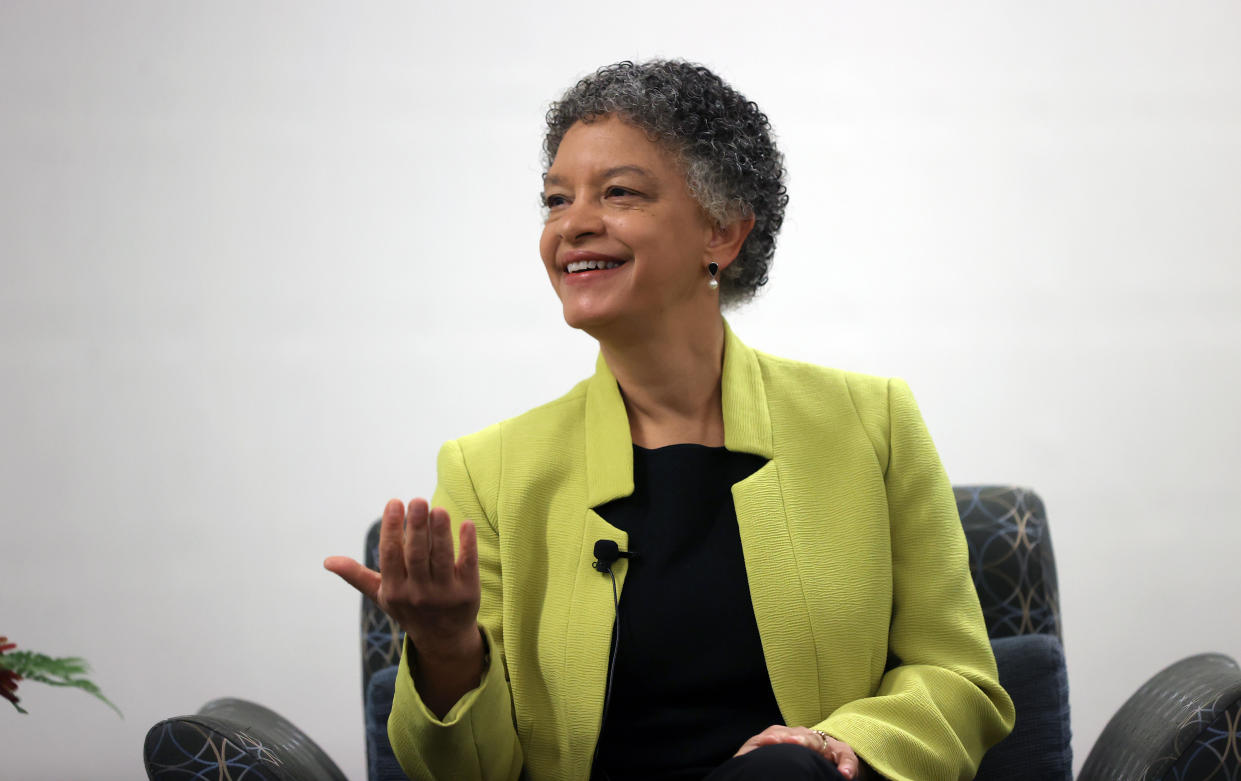Collins becomes latest Fed official to warn rates will likely stay higher for longer
Boston Fed president Susan Collins said Wednesday it will take longer "than previously thought" to bring inflation down, becoming the latest policymaker to make it clear that rates need to stay at their current levels.
"The recent data lead me to believe this will take more time than previously thought," Collins said in a speech at the Sloan School of Management at the Massachusetts Institute of Technology. "There is no pre-set path for policy."
Collins believes that improvements in supply chains that helped cool inflation quickly last year may not continue this year, and that slower economic growth will be needed to bring down demand and therefore inflation.

Still, she remains optimistic that inflation can be brought back to the Fed's goal of 2% in a reasonable amount of time and with a job market that remains healthy.
Other Fed officials this week have also shown they favor holding rates at current levels for longer.
New York Fed president John Williams said Monday that "policy is in a very good place [now] and we have the time to collect more, so steady as she goes."
Minneapolis Fed president Neel Kashkari said Tuesday that he believes rates will likely need to be held at current levels for an "extended period" but also didn't rule out a hike if inflation stalls near 3%.
"I think it’s much more likely we would just sit here for longer than we expect or the public expects right now until we see what effect our monetary policy is having," Kashkari said at the Milken Institute conference in Los Angeles.
The comments this week from various Fed officials come after the Fed’s interest rate-setting committee decided last week to keep its benchmark rate in a range of 5.25%-5.50%, a 23-year high, at the conclusion of its two-day policy meeting.
Read more: What the Fed rate decision means for bank accounts, CDs, loans, and credit cards
The fed funds rate has been in this range since July 2023.
The committee said in its latest policy statement that "in recent months, there has been a lack of further progress toward the Committee’s 2 percent inflation objective."
Officials reiterated more clarity would be needed in the outlook for inflation returning to target before cutting rates.
Inflation has shown a lack of progress in the first three months of the year after a steady decline in the second half of last year.
"The Committee does not expect it will be appropriate to reduce the target range until it has gained greater confidence that inflation is moving sustainably toward 2 percent," the statement read.
Collins said Wednesday that she views rates in the current range of 5.25%-5.5% as having a "moderately restrictive" impact on the economy, but at a level that balances the risks of lowering rates too soon with those of holding off too long.
"It is possible that policy became restrictive more recently than thought, and we have not yet seen its full impact, especially if the economy becomes more interest-sensitive over time, as firms refinance their existing low-cost debt and households exhaust their excess savings accumulated earlier in the pandemic," she said.
Before taking the step of lowering rates, Collins said she is watching to see whether inflation continues to drop, especially in housing and services areas, while also looking for signs that short- and longer-term inflation expectations remain well anchored.
The job market, she said, has to become more balanced with more equal supply of workers for demand from employers. And wages need to rise in a way that is not inflationary.
Overall, companies appear well positioned to potentially absorb some faster wage growth without adding to inflation, Collins said.
But she said she thinks the recent burst in productivity is a readjustment instead of a persistent increase, though it’s possible that could change into something more durable.
Productivity — output per worker — is key to keeping a lid on inflation pressures — and one of the reasons economists believe the economy was able to be resilient last year without inflation rising.
Click here for in-depth analysis of the latest stock market news and events moving stock prices.
Read the latest financial and business news from Yahoo Finance
